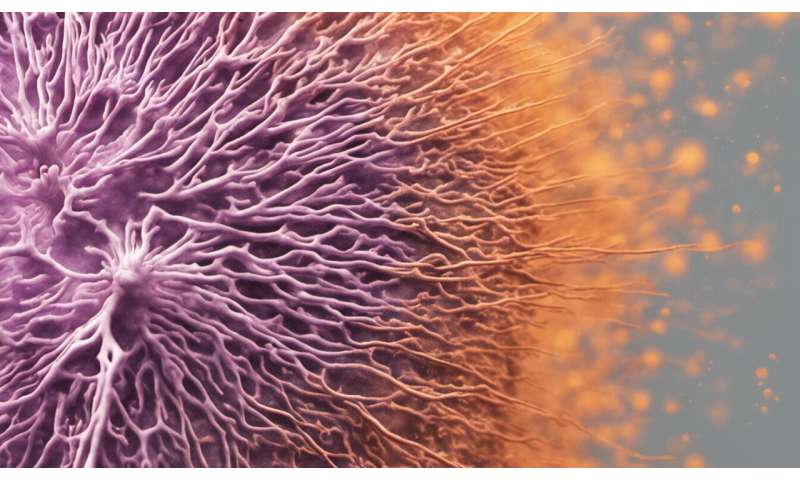Taking the itch out of cancer immunotherapy

Using the body’s immune system to fight cancer has great potential, but can also bring serious side effects, including itchy and painful skin reactions. But now, researchers from Japan have found how these skin reactions happen, potentially leading to a way to prevent them.
In a study published this month in Communications Biology, researchers from the University of Tsukuba have determined that one unpleasant side effect of immunotherapy with PD-1 inhibitors, called “anti-PD-1 antibody-induced psoriasis-like dermatitis,” is caused by inflammation resulting from high levels of a specific protein. Cancer immunotherapies work through a process that allows the body’s T cells to recognize and attack cancers. But because these same processes regulate inflammation, things can get out of balance.
Therapies targeting PD-1 often lead to side effects called immune-related adverse events (irAEs), which happen in more than 70% of patients who take them. The most common of these is a skin reaction, and while some of these are mild and can be easily treated with steroid creams, other patients have itchy, painful, or scaly rashes requiring more intensive treatment. Nearly a fifth of patients receiving immunotherapy stop taking the treatment because of irAEs—even though the treatment may be working well against their cancer.
“Inhibition of the PD-1 pathway is becoming front-line treatment for more and more cancers,” says senior author Professor Naoko Okiyama. “But it can’t work if patients experience adverse events and discontinue treatment because of them. We hoped that by finding out exactly how PD-1 inhibitors cause dermatitis, we could also find a way to stop it.”
The new study builds on earlier research from the same team, who examined blood samples from cancer patients with this side effect, finding high levels of a cell signaling protein called IL-6. Testing this theoretical connection in mice, they found that PD-1 deficiency increased numbers of a specific type of white blood cells (called CD8 T cells) infiltrating the epidermis. CD8 T cells help the immune system kill viruses and bacteria as well as cancer cells. But when activated in large numbers, they can cause an excessive immune response leading to irAEs.
The experiments in mice showed that PD-1 expressed on CD8 T cells regulates skin inflammation. The mice with PD-1 deficiency had high levels of IL-6 expression and subsequently developed dermatitis. As a final step, the researchers used an antibody to block IL-6 signaling in some of these mice—and those mice developed significantly less dermatitis than the control group.
“Altogether, the results clearly show the efficacy of targeting IL-6 in mice,” explains Professor Okiyama. “With further study in humans, we may have a potential approach to resolving PD-1-related dermatitis.”
On the basis of these results, the researchers also propose that blockade of both IL-6 and PD-1 together could have an even better combined anti-cancer effect, though this has not yet been systematically studied. It’s also unknown whether the approach will work as well in people as it does in mice.
“Our most striking finding is the importance of PD-1 expression on CD8 T cells in the development of dermatitis, showing real potential of IL-6 as a target for therapeutic intervention,” says Professor Okiyama. “But the hope is that we can implement this combined strategy without compromising the anti-tumor effects of the anti-PD-1 therapy.”
Source: Read Full Article
